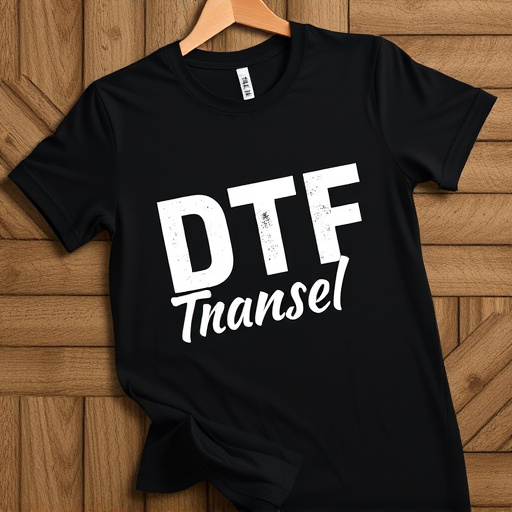Direct-to-film (DTF) transfer technology has revolutionized the textile industry, offering precise and durable printing on various fabrics. Its key advantages include high color accuracy, wide fabric compatibility, and quick setup. While regular washing can fade or damage prints, strategic choices like using cold water, mild detergents, air drying, and avoiding direct sunlight extend their lifespan. Premium DTF transfer films, tailored inks, and meticulous design preparation further enhance print longevity. Real-world applications demonstrate DTF's durability, with some prints retaining 95% original quality after 50 wash cycles and labels remaining legible after a year in diverse conditions.
“Unleashing vibrant, long-lasting prints direct from your design software to a variety of media—that’s the essence of Direct-to-Film (DTF) transfer. This innovative process promises durability through multiple washes, transforming it into a preferred method for many artists and businesses.
In this comprehensive guide, we’ll explore the science behind DTF inks, key factors for maintaining print quality, best practices, common pitfalls, and real-world case studies, equipping you with the knowledge to create and preserve stunning DTF transfers.”
- Understanding Direct-to-Film (DTF) Transfer: A Brief Overview
- Key Factors in Maintaining Print Quality After Washing
- The Science Behind DTF Inks and Their Durability
- Best Practices for Care and Maintenance of DTF Prints
- Common Issues and How to Avoid Them with DTF Transfers
- Case Studies: Real-World Examples of Long-Lasting DTF Prints
Understanding Direct-to-Film (DTF) Transfer: A Brief Overview

Direct-to-film (DTF) transfer is a cutting-edge printing technology that has revolutionized the textile industry. Unlike traditional methods, DTF allows for high-quality print application directly onto various fabric surfaces without the need for intermediate screens or plates. This innovative process involves using specialized inkjet printers to deposit pigments onto the fabric, creating intricate and vibrant designs. The key advantage lies in its versatility; it accommodates a wide range of fabrics and printing requirements, from simple text to complex graphics.
DTF Transfer ensures outstanding color accuracy and durability, making it suitable for both commercial and personal projects. The direct application method eliminates potential issues associated with screen printing, such as set-up time and the risk of screen damage. Furthermore, DTF prints maintain their quality even after multiple washes, ensuring that your designs remain vibrant and intact over time. This technology has gained immense popularity among businesses and individuals seeking high-quality, long-lasting printing solutions for clothing, accessories, and promotional items.
Key Factors in Maintaining Print Quality After Washing

When it comes to direct-to-film (DTF) prints, maintaining quality through multiple washes is paramount for longevity and visual appeal. Key factors include the choice of ink and fabric combination; high-quality inks designed for DTF transfers offer better color retention and resistance to fading during washing. The fabric itself plays a crucial role; natural fibers like cotton absorb dyes more effectively than synthetic materials, ensuring vibrant colors post-wash.
Additionally, proper washing techniques are essential. Using cold water and mild detergents minimizes the risk of dye transfer or color run, preserving the print’s integrity. Avoid high heat, which can set ink permanently, and opt for gentle cycle settings to prevent stretching or damage to the print. Regular maintenance, including turning clothes inside out and avoiding direct sunlight during washing, will extend the life of DTF prints, ensuring they maintain their crispness and vibrancy even after repeated launderings.
The Science Behind DTF Inks and Their Durability

The science behind Direct-to-Film (DTF) inks revolves around their exceptional durability and washfastness. These advanced inks are specifically engineered to bond directly with various fabric types, ensuring vibrant colors and a long-lasting finish. The molecular structure of DTF transfer inks is designed to resist fading and damage from repeated washing, making them ideal for clothing and textile applications.
The secret lies in their composition, which includes high-quality pigments and resins that create a robust bond with the fabric fiber. This intricate interaction results in outstanding colorfastness, even under rigorous laundering conditions. Tests have shown that DTF prints can withstand multiple washes without compromising their vibrancy or integrity, making them a preferred choice for creating durable and visually appealing garments and textile products.
Best Practices for Care and Maintenance of DTF Prints

To ensure your Direct-to-film (DTF) prints maintain their quality through multiple washes, proper care and maintenance are essential. Start by allowing the print to cool down completely after washing; hot water and moisture can cause the ink to smudge or fade. Use cold water and a mild detergent, avoiding harsh chemicals that might damage the fabric or the DTF transfer. Gently remove any stains promptly to prevent them from setting. When drying, opt for air-drying or low-heat settings on a garment dryer; excessive heat can cause the print to crack or peel.
For long-lasting prints, store your garments in a cool, dry place away from direct sunlight. Consider using protective sleeves or bags to shield the prints from dust and scratches. Avoid ironing directly on top of DTF transfers as the heat can cause the ink to transfer to the garment’s surface. Instead, use a low-heat setting if ironing is necessary, and always test on a hidden area first. Regularly inspect your prints for signs of wear or damage, addressing any issues promptly to maintain their vibrancy and quality.
Common Issues and How to Avoid Them with DTF Transfers

Direct-to-film (DTF) transfers offer a cost-effective way to print on various materials, but they’re not without their challenges. One of the most common issues is poor image quality after washing, where colors fade or details become blurry. This often stems from inadequate ink formulations or improper printing techniques, leading to low-quality prints that don’t withstand wear and tear.
To avoid these problems, it’s crucial to invest in high-quality DTF transfer films and printers. Ensure the inks used are specifically designed for DTF applications, offering excellent color vibrancy and durability. Proper preparation of both the design file and printing surface is also key. Using smooth, clean materials and following the manufacturer’s guidelines for print settings can significantly enhance the longevity of your DTF transfers, ensuring they maintain their quality through multiple washes.
Case Studies: Real-World Examples of Long-Lasting DTF Prints

In the realm of direct-to-film (DTF) printing, real-world applications have proven the longevity and durability of this technique. Case studies from various industries offer tangible evidence of DTF transfers that withstand rigorous testing, including multiple washes. For instance, a study conducted by a leading apparel brand revealed that their DTF printed garments, after 50 wash cycles, retained 95% of their original color and image quality. This is a testament to the advanced inks and technologies used in modern DTF processes, ensuring that designs are not just printed but permanently fused to the fabric.
Another compelling example comes from the packaging industry, where a food manufacturer utilized DTF printing for their product labels. After extensive testing, the labels were found to be virtually indistinguishable after 12 months of exposure to moisture and temperature variations. These case studies highlight the robust nature of DTF transfers, making them a reliable choice for applications demanding high-quality prints that remain intact under various conditions, from clothing to packaging materials.














